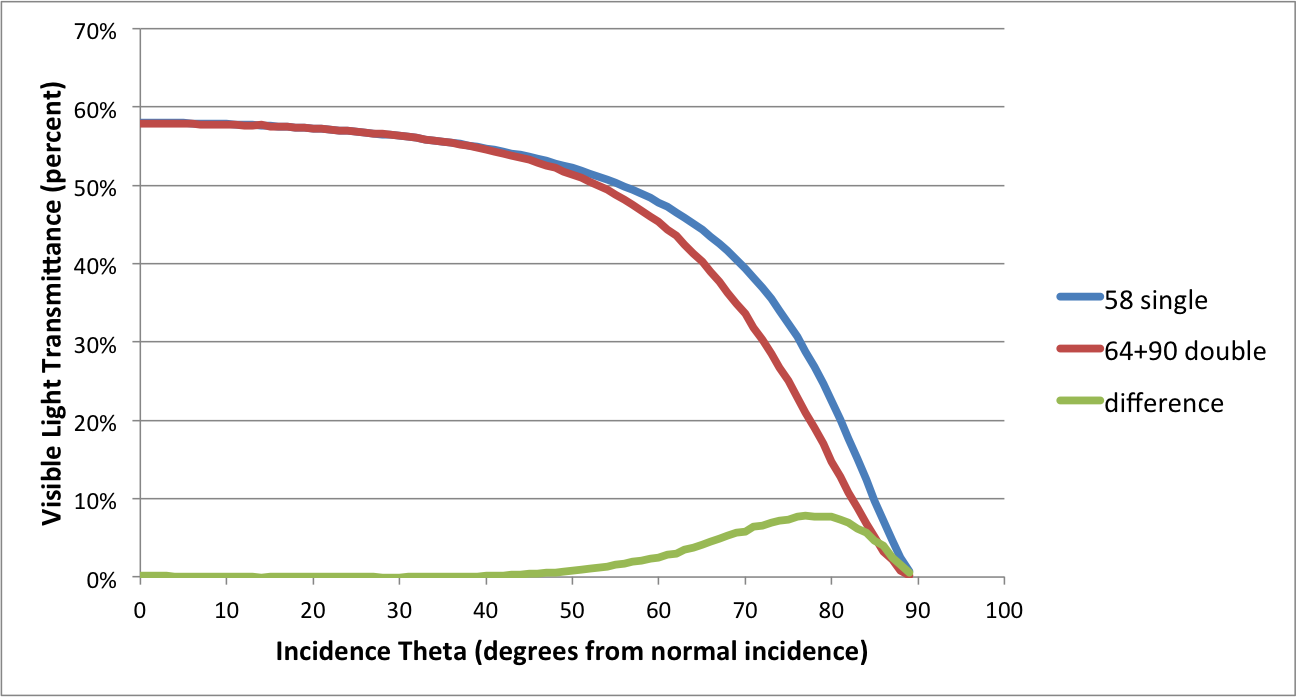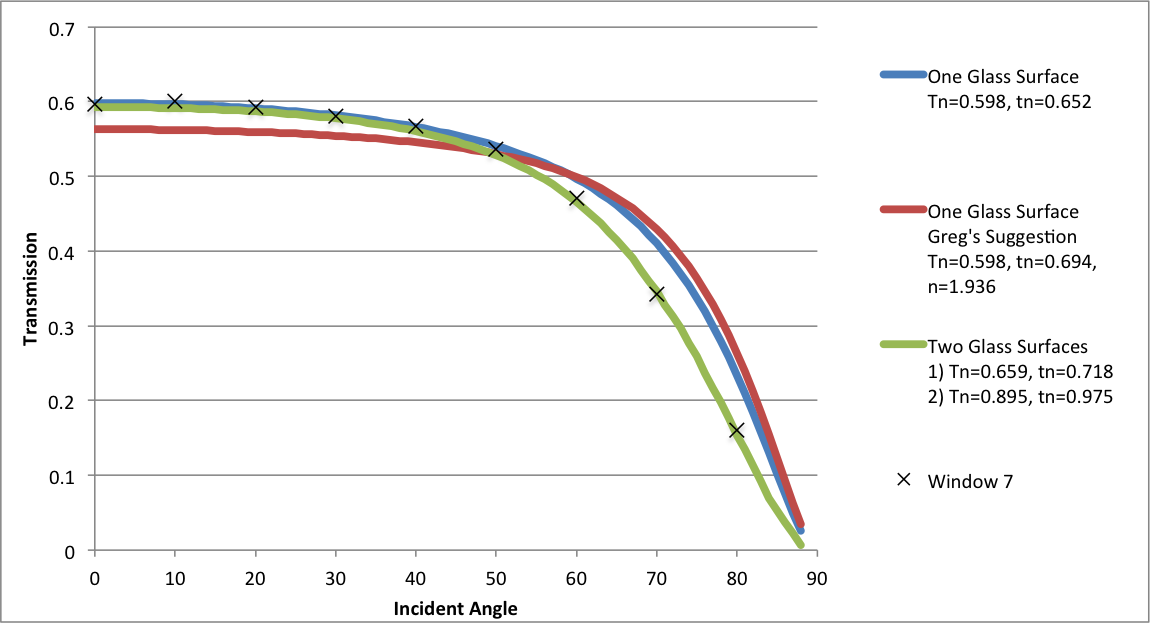Converting transmittance to transmissivity for IGUs
Glazing manufacturers and IGU vendors generally provide visible light transmittance of their wares, but Radiance takes transmissivity as input to its "glass" and "trans" materials. The formula typically used for converting transmittance (Tn) to transmissivity (tn) as published in "Rendering with Radiance" (among other places) looks like this:
tn = (sqrt(.8402528435+.0072522239*Tn*Tn)-.9166530661)/.0036261119/Tn
Axel Jacobs also found this simpler factor to work well in most cases:
tn = 1.0895 * Tn (details here, p.21)
OK so that's great, but transmissivity is the fraction of light not absorbed in one traversal of a single piece of material. And so--at long last--we arrive at the question:
Do these Tn-to-tn conversion formulae fall down when applied to a Tvis number supplied for an inherently multi-paned affair like an IGU? Hmmm?







 (less used in literature) is a single pass transmittance. In practice a layer of glass will have multiple interreflections which must all be accounted for in calculating the total transmittance
(less used in literature) is a single pass transmittance. In practice a layer of glass will have multiple interreflections which must all be accounted for in calculating the total transmittance  .
The total wavelength-averaged reflectance leaving the top surface divided by the incident flux in below figure can be calculated by summing the infinite series of components making up the total flux.
.
The total wavelength-averaged reflectance leaving the top surface divided by the incident flux in below figure can be calculated by summing the infinite series of components making up the total flux.


 .
The answers are:
.
The answers are: 



